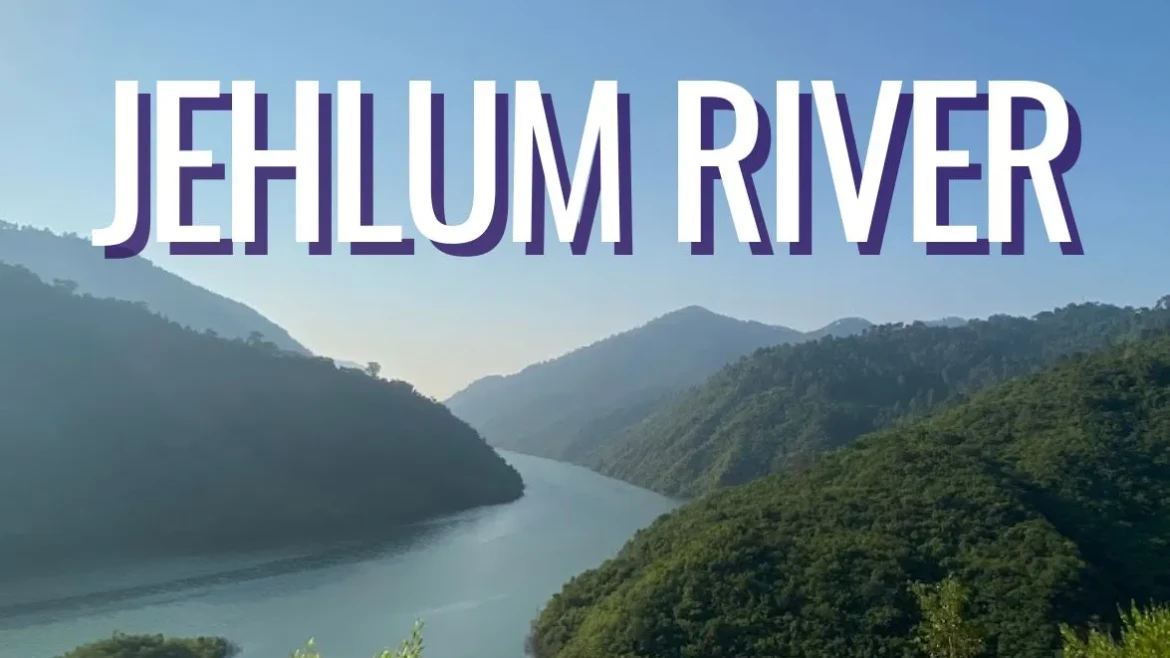The Jehlum River – Pakistan’s Lifeline plays a vital role in the country’s environment, economy, and culture. It begins from the Verinag Spring in Indian-administered Kashmir. From there, it flows through valleys, cities, and plains before joining the Chenab River in Pakistan. Along its journey, it brings beauty, power, and life.
From the Mountains to the Plains
The river starts in the Pir Panjal Range. It flows through Srinagar, then into Wular Lake—one of Asia’s largest freshwater lakes. After that, it enters Azad Kashmir, passing through Muzaffarabad and Mirpur. Finally, it reaches Punjab, where it joins the Chenab. In total, the river travels about 725 kilometers.
How the Jehlum River Supports Pakistan
The Jehlum River – Pakistan’s Lifeline is essential for farming. Its water irrigates large areas of Punjab. In addition, it supports hydroelectric power, especially through the Mangla Dam, which is one of the largest dams in Pakistan. Moreover, the river provides water for homes and industries. It also supports fishing and small businesses along its banks. Without it, many communities would struggle to survive.
A River Full of History and Culture
The Jehlum is not just a river. It is part of history. Many believe it is the same as the Hydaspes River, where Alexander the Great fought King Porus in 326 BCE. Beyond history, the river is part of daily life and local stories. It appears in Sufi poetry, Punjabi songs, and Kashmiri legends. For many, the river is a symbol of connection between land and people.
A River That Needs Protection
The river is home to many fish, birds, and plants. However, it faces threats. Pollution, climate change, and cutting of trees near the banks are affecting its flow. Because of these issues, the river’s future is at risk. It is important to manage the water wisely. We must also protect its natural surroundings for future generations.
The Jehlum River’s Role in Tourism
People visit the Jehlum River to enjoy its beauty. Places like Verinag, Wular Lake, Mangla Lake, and the green valleys of Azad Kashmir attract visitors. Tourists enjoy boating, hiking, and photography in these spots. As tourism grows, the river brings economic benefits to local areas. With proper care, it can continue to support both nature and tourism.
Jehlum River and the Indus Waters Treaty
Under the Indus Waters Treaty (1960), the Jehlum River was given to Pakistan. Even though it starts in India, Pakistan has the right to use its water. India can only use it for non-consumptive purposes, like making electricity. This agreement shows how important the river is for both countries. Managing it fairly is key to peace and cooperation.
Conclusion: Jehlum River – Pakistan’s Lifeline
The Jehlum River – Pakistan’s Lifeline gives water, energy, and hope. It links the beauty of Kashmir with the fields of Punjab. It helps farms grow, powers homes, and carries stories from history. To protect it is to protect our future. With care and respect, the Jehlum River will continue to flow strong for generations to come.


